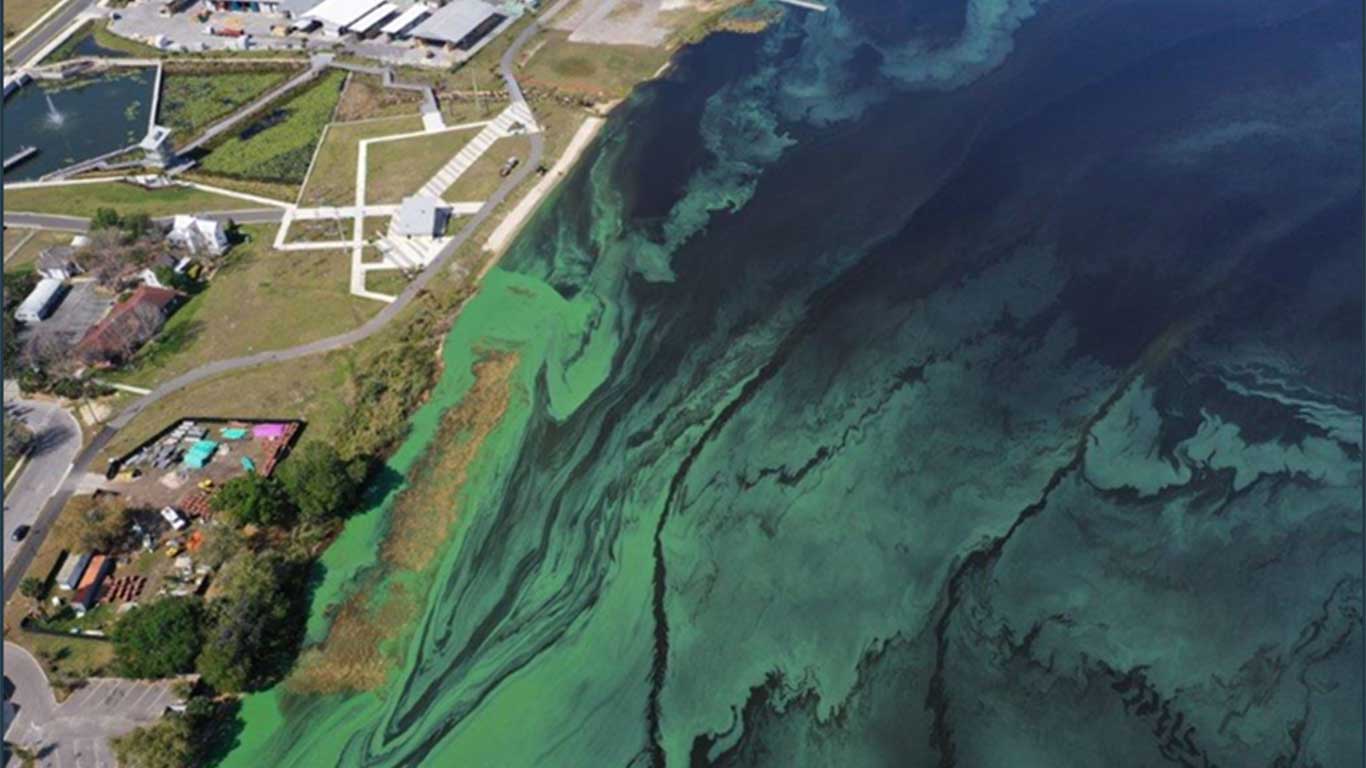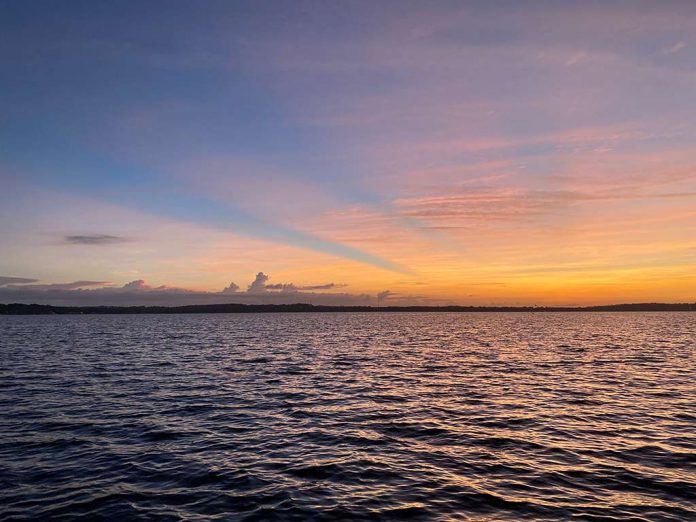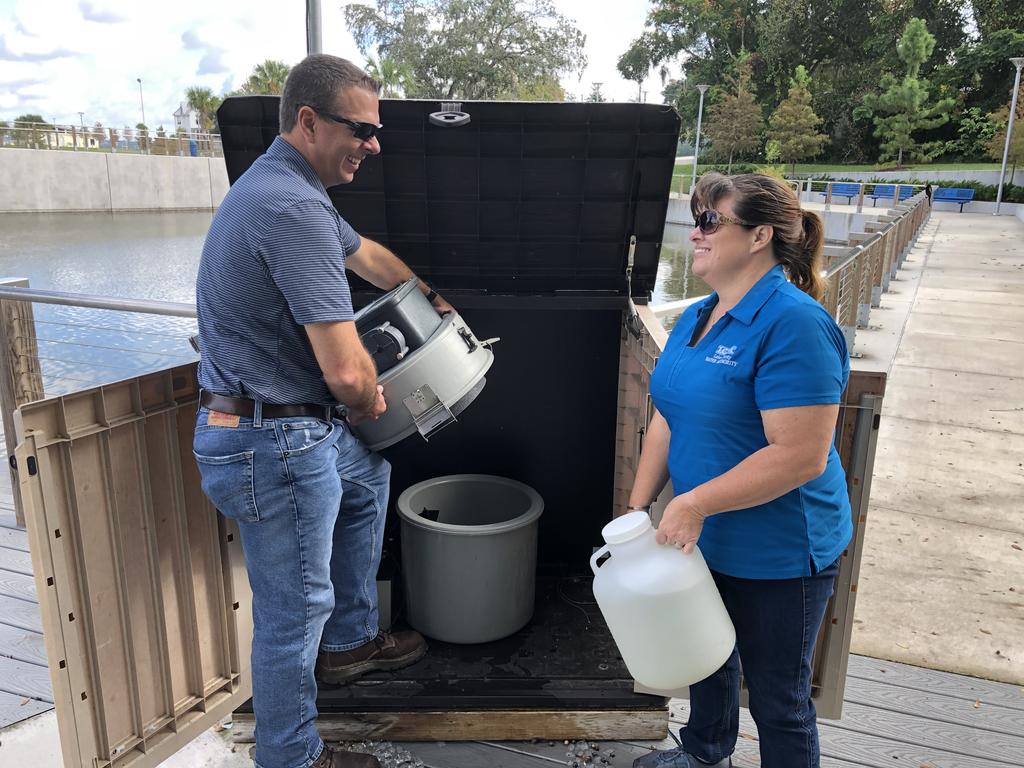Often, blue-green algae populations explode in size when a significant increase in nitrogen or phosphorus concentrations enter the affected waterbody. Nutrients can be carried into lakes and rivers as a result of many human activities, including discharge of stormwater or untreated sewage, agricultural runoff, and use of phosphorus-based fertilizers and detergents. In the Spring, Wood’s scientific team initially monitored and sampled water directly from Lake Minneola, but the data was inconclusive and couldn’t pinpoint a specific cause for the occurrence of algae.

The present studies began in August and are evaluating water sources entering Lake Minneola from surface run-off and ground water seeping into the lake. Surface water samples are being collected from various locations around the lake.
Wood’s team deployed autosamplers at the stormwater system’s inflow and outflow to sample surface water before and after it is treated by the system. The autosamplers are programed to collect water samples when specific rainfall amounts occur within a defined period of time. Wood’s team then collects the water samples and analyzes them for nitrogen, phosphorus and solids concentrations.
The 12-month study at Victory Pointe has collected three samples to date and anticipates collecting several more between now and July 2021. Lance Lumbard, senior scientist and project lead from Wood says, “It is still too early in the current study to see trends in the data or comment on surface water or groundwater quality entering the lake.”

In addition to sampling at Victory Pointe, over a dozen seepage meters have been placed around the perimeter of Lake Minneola to collect samples of groundwater entering the lake. While the seepage meters are below water level and should mostly go unnoticed by boaters and swimmers, it is anticipated the meters will provide important information as to the type and quantity of nutrients entering the lake.
The ultimate goal of the project is to identify if an area of Lake Minneola’s watershed is introducing elevated nutrient concentrations and if one is identified, LCWA will work with state and local agencies to improve pre-treatment of the water entering this Outstanding Florida Water.
For more information on the Lake Minneola project or any Lake County Water Authority programs or preserves, visit www.lcwa.org or call 352-324-6141







